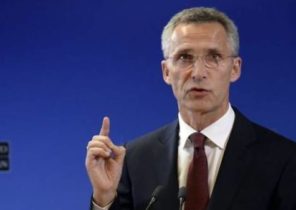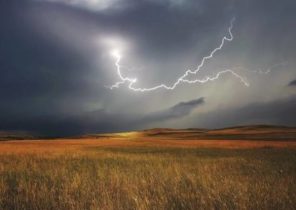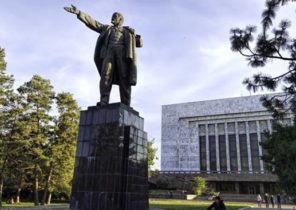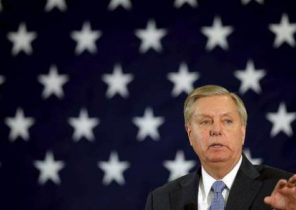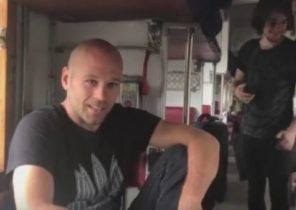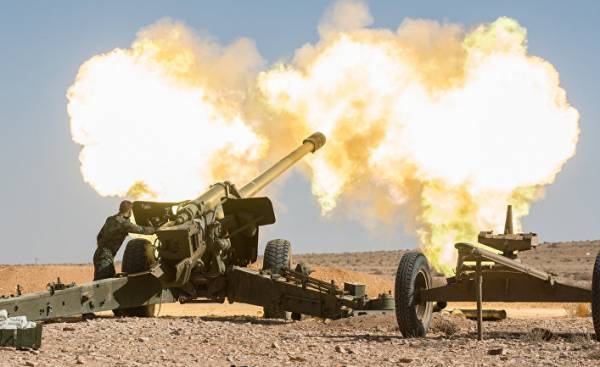
Despite the fact that Syria is in the ongoing seventh year of the war “de facto” divided into six parts, four “zones de-escalation,” the operation in raqqa in many respects clarify what the future holds for this country. Among the scenarios in the period after an operation in raqqa in the forefront of Lebanese, Bosnian, Iraqi model.
Six years after the start of the war in Syria, the fighting has shifted to the Iraqi border, the so-called Eastern front. All attention is focused on operations in raqqa, initiated by the Union, States — “the Democratic forces of Syria” (SDG). After the operation in raqqa, the capital of LIH (banned in Russia — approx. ed.), in much clearer projection of the future of Syria. And the American side, and the people’s protection Units (YPG), one of the largest components of the SDG forces say that the operation in raqqa will end sooner than expected. United States that do not allow the Syrian army and Shiite militants “Hasdi Shabi” closer to raqqa, seeking in Eastern Syria to consolidate its rule that in Western Syria, they lost to Russia.
The center of Islamic state — raqqa, situated on the banks of the Euphrates river, along with Deir-ez-Zor, located nearby, is endowed with vast reserves of oil and natural gas. Line of raqqa — Deir-ez-Zor is an important petroleum basin, together with Mosul, the second largest city of Iraq in the hands of ISIS. It whets the appetite of the United States, and Washington did not intend to share these areas with anyone.
The scenario that the U.S. has set for Syria!
Occurring today, the picture was not the scenario that the US was originally designed in Syria with the intention to change the regime in this country. According to the original script, it was necessary to support the Islamists, the regime was soon to fall, as in Libya, Assad would run, and came to power would moderate Islamists. But this did not happen. In the case entered a Shiite resistance front along with Iran, Hezbollah.
In the future, connecting Russia, which actually lean on this front, the war completely changed.
The United States were prepared. When the first plan didn’t work, were immediately involved second and even a third plan. They stretched out the war for years.
The US has developed a strategy aimed at not to cede Syria to Russia and Iran as a whole. They used the classic strategy of imperialism “divide and rule”. Developed tactics in accordance with it. They tried to break the resistance of Syria and gave a signal to Russia: “Even if I leave Syria, you will get a ruined country.”
Syrian land is divided into six parts
If you look at the current situation in Syria… the Country is de facto divided into six parts.
Northern Syria / Rozhava. The North of the country is under the control of Syrian Kurds. The Kurds under the leadership of the Party “Democratic Union” (PYD) declared autonomy in three cantons, seeking to strengthen its position and rise to a higher level. Was proclaimed a democratic Federation of Northern Syria, which covers the cantons in Cizre, Kobani and Afrin. The Kurds, who develop a close relationship with the US and Russia, it seems, has not severed its relations with Syrian government.
North-Western Syria / area of the operation “shield of the Euphrates”. Thanks to the operation “shield of the Euphrates”, launched last August, Turkey is actually situated among the Kurdish cantons, which she declared a “red line”. The result of the operation spent together with the Free Syrian army (FSA) secured control over the region with a width of 35-40 kilometers, from Jerablus to Azaz, from El Raya El-Baba.
North-Western Syria / province of Idlib. Idlib, which is under the control of the jihadists, supported by the USA, Saudi Arabia, Turkey, is actually the Emirate “al-Nusra” (banned in Russia — approx. ed.). It is in a sense zapadnosibirskaya version Raqqa, controlled by ISIS. “Dzhebhat an-Nusra” – the Syrian wing “al-Qaeda” (banned in Russia — approx. ed.), which according to the counsel of state sponsors changed its name to “jabhat al Fatah al-sham”, is the largest jihadist group in the region of Idlib. Idlib is a place where is jihadists expelled from Aleppo, Damascus.
Eastern Syria / raqqa / “Islamic state”. Raqqa on the Euphrates in Eastern Syria for three years is the center of ISIS. It is the capital of the “Islamic state” that ISIS proclaimed. This area is near the Iraqi border, is rich in oil reserves.
Southern Syria / Daraa. Dara’a on the border with Jordan — the city that lit the fuse of war in Syria. Here broke out the first riots. Controlled units “EN-Nusra”, “Army of conquest”, the FSA, which is positioned as “moderate” jihadists and fueled by Jordan in coordination with the United States.
Syrian state. The Syrian government dominates on the line, stretching from Deraa in the South to Aleppo in the North, and in areas to the West of this line. The Syrian state, which holds in its hands all the country’s major cities except Rakka and Idlib, established control in Western Syria, in addition to Idlib. Along with Hama, HOMS, Palmyra under the control of the government are the cities on the Mediterranean coast, as Latakia, Tartous, Banias.
“Zones de-escalate” in the four regions
In the capital of Kazakhstan, Astana, on the initiative of Russia, Iran and Turkey in Syria, de facto divided into six parts, was declared a “zone de-escalate” in the four regions where there are the most intensive fighting between regime forces and jihadists as well as “safe zones” along the borders of these regions.
 © Ministry of defence Rfsuny de-escalation in Syria
© Ministry of defence Rfsuny de-escalation in Syria
The territory in which the zones were established de-escalation, the following:
1) some areas of the provinces of Idlib, Hama, Aleppo, and Latakia;
2) some areas in Northern HOMS province;
3) the Eastern ghouta East of Damascus;
4) some provinces in the South such as Deraa and Quneitra.
These zones will be in effect for six months, then in case of a consensus on the guarantors of the agreement will be renewed automatically. The agreement does not apply to organizations such as ISIL, “Dzhebhat an-Nusra”. In these areas the parties agree not to use the weapon to commit air strikes. The first goal is ensuring humanitarian access to these areas, the creation of infrastructure.
The “Moscow Declaration” and the new Constitution of Syria
How and where evolyutsioniruet separated structure in Syria will depend on the progress of hostilities. But Russia, Iran, and finally Turkey, the Syrian policy which has failed to perceive the territorial integrity of Syria as an indispensable condition. In the draft Constitution, which was prepared last February, Russia presented the Syrian “opposition” in Astana, also noted that Syria “is sole, inviolable and indivisible.” It is said that the state frontiers can be changed only through a referendum conducted among all citizens of Syria. Official name of country deleted the word “Arab”. It is noted that the state bodies and organizations of the Kurdish cultural autonomy had to use the Arabic and Kurdish languages interchangeably.
The document, known as the “Moscow Declaration”, at the same time offers a secular polity in Syria. Noteworthy is the fact that the text of the Declaration, the three countries Express their intention to recognize the “multireligious, polyethnic, democratic, secular” nature of Syria.
Now we discuss different scenarios regarding Syria in the period after an operation in raqqa.
1. The Iraqi model. One of the most likely models. It involves the creation of internally divided over Syria, while preserving the integrity of the country. Assad will remain, the Kurds will be given a special status of the Arab-Sunni tribes / groups will be integrated into the system. The political structure is divided among the three major ethnic / religious groups. In Iraq, the presidency is the Kurds, Prime Minister from the Shiite speaker of the Parliament, the Sunnis!
2. The Lebanese model. This consolidation, in which public and political structure in Lebanon, organized according to ethnic, religious affiliation. In the Lebanese political system the presidency constitutional Christian, the Premiership for Sunnis, the seat of the speaker of Parliament for a Shia.
3. The Bosnian model. The model, consisting of three ethnic groups. In accordance with the Dayton accords, the country was divided along ethnic lines into two parts (the Federation of Bosnia and Herzegovina and Republika Srpska) and the small Autonomous Brcko district. For making any decision or act shall require the approval of three ethnic groups. The redistribution of power within the state for the Bosnian model is facing new challenges.
4. The Sudanese model. The division of the country into two or three parts. In the East, a Sunni state in the North is Kurdish, in the West — Syrian. This scenario is often voiced behind closed doors. Sudan represents the last state, which was separated “by agreement”. In 2004, the country was divided into North and South. Although there are all sorts of border disputes, this model is perceived as a kind of peaceful solution. Russia and the United States have often argued that territorial integrity of Syria will remain. However, now this option seems the least likely.
